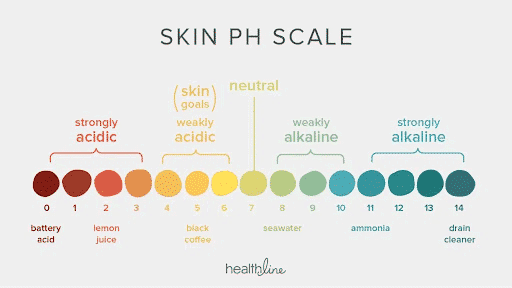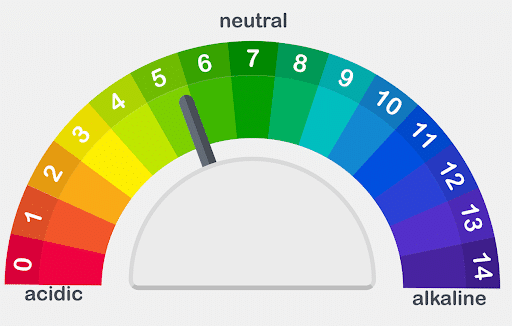The Importance of a Slightly Acidic pH in Skin and Wound Care
What is pH?

The scientific term “pH” is an abbreviation that stands for “potential of hydrogen,” which is a measure of the acidity or alkalinity of a solution. The more hydrogen ions available, the more acidic, and the lower the pH. The pH scale measures the acid-alkaline ratio from 1 (most acidic) to 14 (most alkaline). A pH of 7 is neutral, so anything lower is acidic, and anything higher is alkaline. For example, lemon juice is about 2.0 and ammonia is around 11.5. The scale is logarithmic, which means that counting down below 7 (neutral pH), each number is 10 times more acidic than the preceding number. The same is true above 7—counting up, each number is 10 times more alkaline.
Why is skin pH important?

The skin consists of an acid mantle comprised of secretions from sweat and sebaceous glands. The sweat gland secretions contain amino acids and lactic acid, while the sebaceous gland secretions consist of sebum (fatty acids and “natural oils”). As indicated by its name, the acid mantle will naturally stay slightly acidic with a pH of around 4.5-5.5. If the skin falls out of the normal range due to environmental agents, topical products, hydration levels, or other factors, the acid mantle can weaken and leave the skin at risk for complications. Therefore, the maintenance of a normal skin pH is essential to protect the skin, preserve the balance of cutaneous flora, and prevent the proliferation of pathogens.
Why is wound pH important to healing?
When there is a break in the skin, the pH of the wound varies during the healing process. It has been found that wound pH normally reduces during the phases of healing. When a wound is in an acidic condition, key cells such as fibroblasts proliferate more actively. This doesn’t mean the lower the pH the better, but a slightly acidic environment provides the best balance for wound healing.
Chronic wounds (those that have failed to progress normally to healing) have been found to have a pH around 8, which is somewhat alkaline. Studies have substantiated that wounds with a more alkaline pH have lower healing rates and may be components of wound chronicity. The environment at both ends of the pH spectrum impacts wound healing, so maintaining an appropriate wound pH is important.
pH in Wound and Skin Care Products

Soaps, moisturizers, and toners can all affect the skin. Soaps can be very alkaline and additives such as alcohols in products may impact the pH and damage the protective acid mantle. Products that are “pH-balanced” refer to products formulated with a pH that falls in the range of normal, healthy skin.
If there is already skin disruption, wound pH is critically important to the healing process and may be impacted by cleansers or dressings. Studies show that wounds need a slightly acidic environment for healing. The slightly acidic pH value has been shown to aid wound healing by controlling wound infections, altering destructive enzyme activity, releasing oxygen, and enhancing epithelization and angiogenesis. Overall, wound products that provide a slightly acidic environment in the wound bed may improve wound healing. Attention to pH is important when making skin and wound care product selections as it is a component of patient safety and quality of care.
Sanara MedTech products aim to create the ideal pH and overall environment to support healthy skin or support a wound healing environment. To learn more about our products, go to https://sanaramedtech.com




